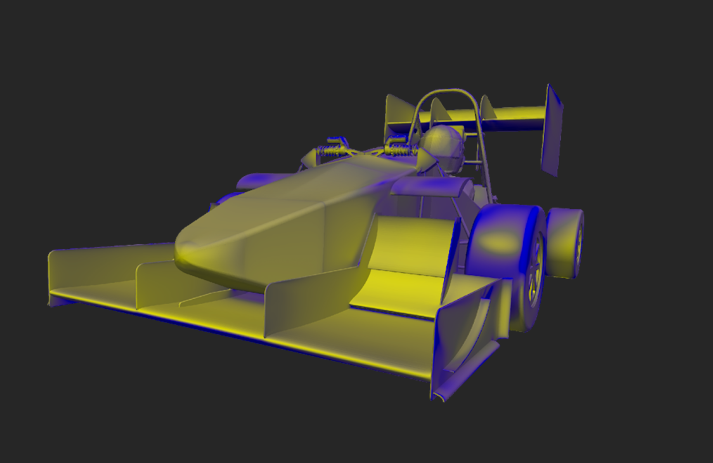Design and Development of Front and Rear Wings for a Formula SAE Car
Capstone Project
In collabration with Ontario Tech Racing
Under the supervision of Dr. Brendan Macdonald Sep 2022 - Apr 2023
Objective
The aim of this capstone was to improve overall laptimes and handling of the school's FSAE vehicle through the design and development of an aerodynamic package. Through various simulation methods and material testing, the team was able to design and develop a robust package that achieves all the core targets.
It has to be noted that this webpage only briefly scratches the surface of the depth and amount of engineering that has gone into this project. A very comprehensive and detailed report was submitted.
Methodology
To evaluate aerodynamic device concepts, Computational Fluid Dynamics (CFD). OpenFOAM was the CFD package and simpleFOAM is the primary solver using the Semi-implicit Method for Pressure Linked Equations Consistent (SIMPLEC) algorithm.
The airfoil profile of choice was the MSHD profile. Designed specifically for motorsports applications, it is good starting point for a first package.
To understand if this aero package improves the laptime of the vehicle, a simple point mass simulation software, OptimumLap was used. From this it estimated that the vehicle would be 4-tenths faster around a 60 second lap.
Weight of the aero package is quite important, thus carbon fiber was the material of choice. Ansys ACP was used to predict the expected deflection and capability to withstand operational loads. Due to the lack of access to an autoclave, infusion was the main process to manufacture the carbon. Material properties of the carbon fiber were gathered through tensile, compressive, 3 and 4 point testing through the use of a UTM and correlated with ACP's simulation results.
To increase the stiffness of the main plane and allow for mounting points, aluminum ribs were placed into the hollow airfoil structure. Inboard and outboard endplates used carbon fiber foam sandwich panels to decrease weight and increase rigidity. Mounted on these endplates were more complex geometries that were 3D printed such that they could be studied and adjusted in the future easily.
After numerous CFD runs, with various different geometries, aerodynamic devices, and keeping the previous targets in mind. The following aero package was finalized:

Results






